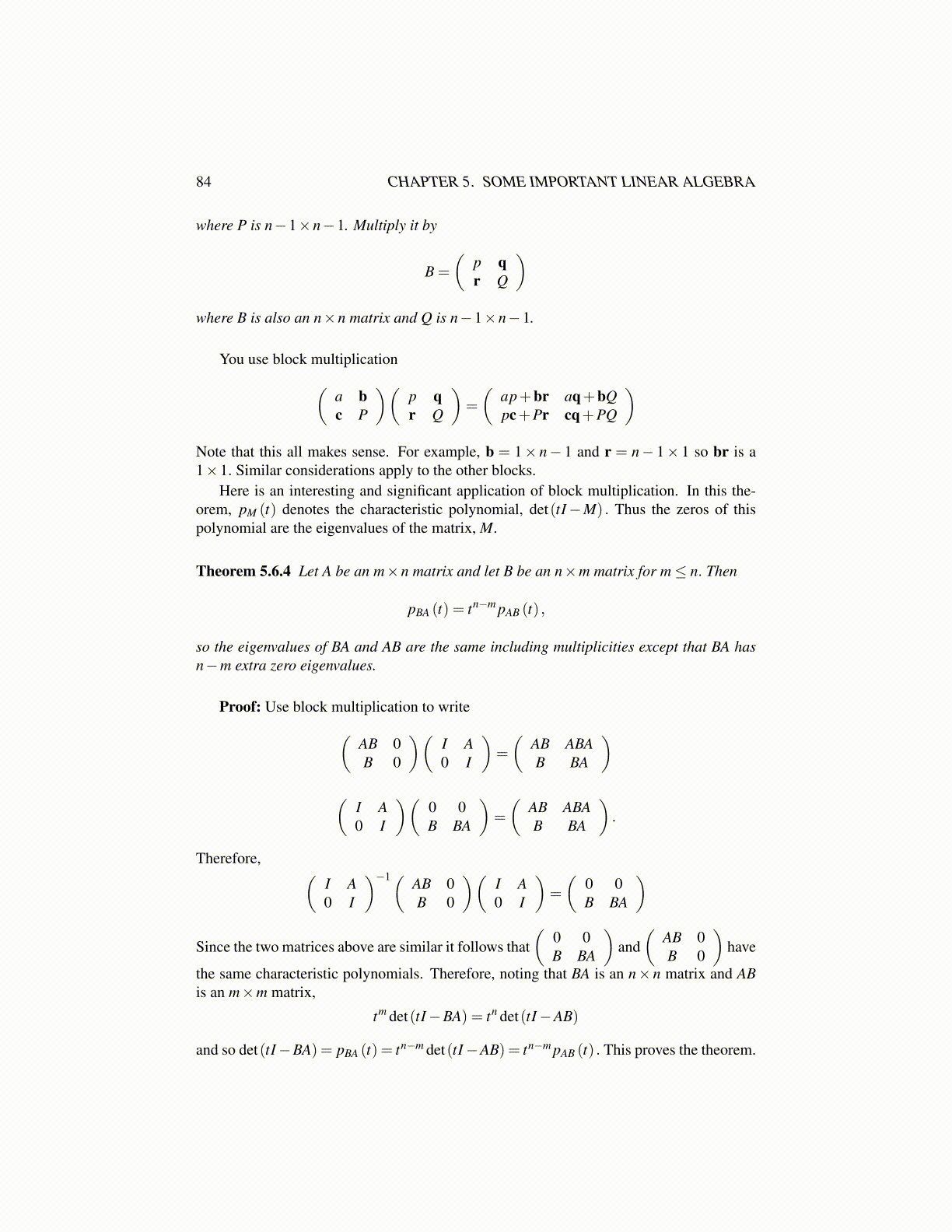
84 CHAPTER 5. SOME IMPORTANT LINEAR ALGEBRA
where P is n−1×n−1. Multiply it by
B =
(p qr Q
)where B is also an n×n matrix and Q is n−1×n−1.
You use block multiplication(a bc P
)(p qr Q
)=
(ap+br aq+bQpc+Pr cq+PQ
)Note that this all makes sense. For example, b = 1× n− 1 and r = n− 1× 1 so br is a1×1. Similar considerations apply to the other blocks.
Here is an interesting and significant application of block multiplication. In this the-orem, pM (t) denotes the characteristic polynomial, det(tI−M) . Thus the zeros of thispolynomial are the eigenvalues of the matrix, M.
Theorem 5.6.4 Let A be an m×n matrix and let B be an n×m matrix for m≤ n. Then
pBA (t) = tn−m pAB (t) ,
so the eigenvalues of BA and AB are the same including multiplicities except that BA hasn−m extra zero eigenvalues.
Proof: Use block multiplication to write(AB 0B 0
)(I A0 I
)=
(AB ABAB BA
)(
I A0 I
)(0 0B BA
)=
(AB ABAB BA
).
Therefore, (I A0 I
)−1( AB 0B 0
)(I A0 I
)=
(0 0B BA
)
Since the two matrices above are similar it follows that(
0 0B BA
)and
(AB 0B 0
)have
the same characteristic polynomials. Therefore, noting that BA is an n× n matrix and ABis an m×m matrix,
tm det(tI−BA) = tn det(tI−AB)
and so det(tI−BA) = pBA (t) = tn−m det(tI−AB) = tn−m pAB (t) . This proves the theorem.